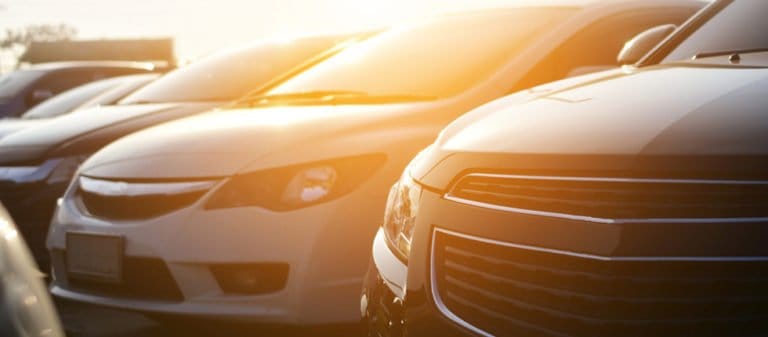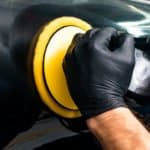Affiliate Disclosure: Some of the links in this post are affiliate links. As an Amazon Associate, we earn from qualifying purchases. Read more in our affiliate policy.

How To Find A Leak In Car Air Conditioner: Step-by-Step Instructions
Suspecting a leak in your car’s AC system but can’t figure out where it is? In this post, we’ll tell you exactly how to find a leak in car air conditioner.
The methods outlined below can be performed with few to no tools. Furthermore, in most cases, they will help you get your AC system up and running again.
With that, let’s go through a few steps that Garage Chief prepared and you could take when looking for an AC leak.
How To Find A Leak In Car Air Conditioner
Here’s how to check your car AC for leaks
Visually inspect your vehicle

To be fair, unless there is severe damage to the car AC, you are unlikely to find a leak with just a visual inspection.
With that said, given how easy and quick this method is, it probably wouldn’t be wise to skip it.
You should be thorough, but don’t expect to easily find anything – more often than not, leaks are so unnoticeable that you can’t find them with a naked eye.
Finding AC leaks with soap
If a visual inspection hasn’t revealed any leaks, then you could make use of the soap method. This is a simple method that is accessible to any car owner.
Here’s how to detect a Freon leak with soap:
- Prepare a thick water soap solution and pour it into a spray bottle.
- Fully charge the AC system.
- Turn the engine and the air conditioner on. Then, to make sure that the AC is even working, you should have a look at its pulley in the engine bay. In a properly working AC, the belt will rotate along with the front of the compressor pulley.
- Spray the solution on all exposed components of the AC.
- Inspect the sprayed parts of the AC.
- In areas with leaks, the leaking gas will foam up the soap.
There are two downsides with this method though.
First, it works only on exposed components of car air conditioners because it may be impossible or dangerous to apply the solution to hidden parts.
Second, if the leak is insignificant, then you may not notice any change in the soap.
Use a refrigerant dye
If none of the previous methods work, then it’s time for the dye method. This is actually the most commonly used method in car shops.
With this method, you mix a UV dye into the refrigerant. Once the dye gets mixed up enough with the refrigerant, it will illuminate under UV light. If there are any leaks, you should be able to see dyed gas flowing out of the car AC.
So here’s how you to find leaks in car A/C systems with the dye method:
- Add UV dye to your car AC system. Note that some refrigerants may have dye pre-mixed, so be sure to first check whether your refrigerant already has dye in it.
- Charge and refill the air conditioner with a refrigerant if necessary.
- Turn the engine and then the AC on. Again, check whether the AC compressor pulley front is turning.
- Allow the AC to run for some time so that the dye gets mixed with the refrigerant. For a good mix, you may need to use the AC throughout a few days.
- Park your car in your garage with the lights off.
- Shine a UV light around the parts of the AC, including the compressor & condenser at the front, the expansion valve and dryer under the hood, and the evaporator under the dash.
If there are any leaks in exposed areas, you should be able to spot them and then fix them. If not, then you should go to our next method.
Look for leaks with a Freon sniffer
Refrigerant leak detectors – also called Freon sniffers – don’t require any dyes, but they do require an initial investment.
Leak detectors can operate differently – some are looking for changes in conductivity or electrical current produced by most refrigerants, while others look for traces of specific gases or sound waves produced when the refrigerant escapes from an AC.
Freon sniffers are useful when the suspected leak location is away from view, preventing you from checking it via the soap or dye methods.
To check for leaks, the tube with the sensor is placed near a possible source of a leak. Upon detecting a leak, the device will beep to warn you about an issue. In most cases, a Freon sniffer will probably let you know exactly where a leak is.
Here is a video about finding AC leaks in your car. Worth to see.
How To Fix A Leaking Car AC
Finding AC leaks can be pretty difficult, but once you hopefully do so, here’s what steps you could take to get your AC fixed.
Use a leak sealer
First up, you could use a leak sealer to treat smaller leaks in your AC system. Leak sealers work by interacting with moisture condensing at the leak spot – upon interaction, the sealer solidifies. Simple and often pretty effective.
With that said, leak sealers have a few problems:
- Leak sealers will react to any moisture inside the AC.
- Leak sealers are not refrigerants, so by adding them into the refrigerant, you are reducing your car AC’s cooling capacity.
- Leak sealers won’t stop leaks caused by faulty O-rings, hose fittings, or the compressor shaft seal.
Replace damaged parts
Replacing damaged parts would be preferable for leak sealing in many cases. You won’t have to face any of the challenges of leak sealers listed above, though you will need to spend money on new parts and possibly on having them installed.
Address a mechanic
Finally, the easiest option is to just take your vehicle to a mechanic and let them do the repairs for you.
For most people, this will probably be the most convenient option – not everybody has the time or desire for detecting car AC leaks on their own.
In fact, if you are going to have a mechanic repair your AC anyway, you don’t need to find AC leaks yourself – the mechanic will do this for you.
Checking Car AC For Leaks – Final Words
You should now clearly understand how to find a leak in car air conditioner. Be ready for everything though since car ACs are complex systems, and there are many things that could go wrong in them.
But hopefully, our tips on how to check car AC for leaks will be helpful for you.
Last update on 2024-04-26 / Affiliate links / Images from Amazon Product Advertising API
Disclaimers
All product names, logos, and brands are property of their respective owners. All company, product and service names used in this website are for identification purposes only. Use of these names, logos, and brands does not imply endorsement.
It is our policy to make every effort to respect the copyrights of outside parties. If you believe that your copyright has been misused, please provide us with a message stating your position and we will endeavor to correct any misuse immediately.
Some of the links in this post are affiliate links. As an Amazon Associate, we earn from qualifying purchases. This means if you click on the link and purchase the item, we may receive an affiliate commission, at no extra cost to you. This helps us keep this website alive. Read more in our affiliate policy.







